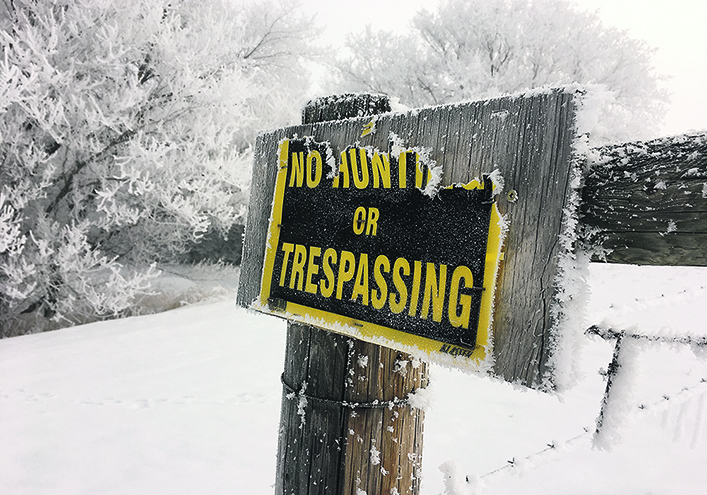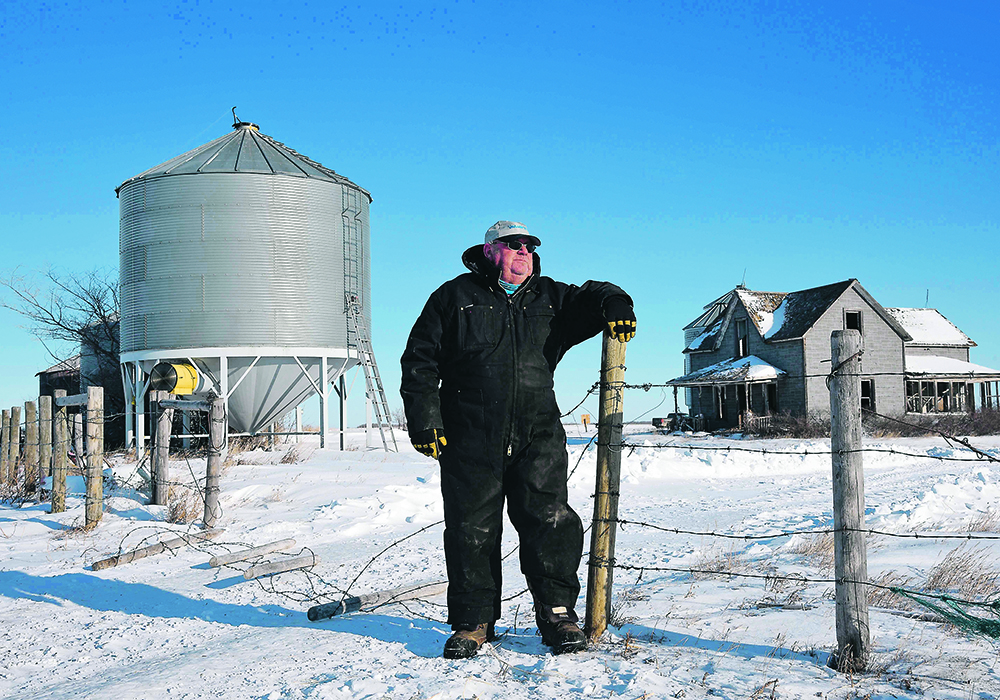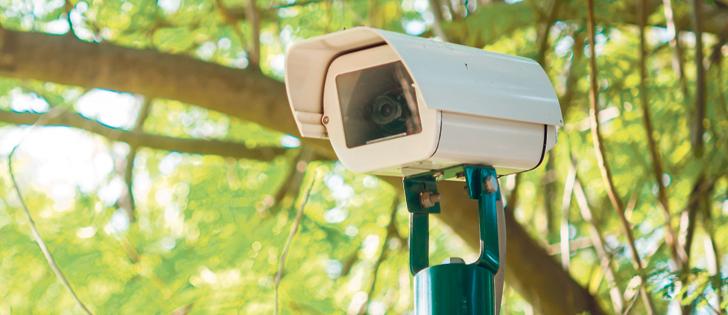Today’s scale of agriculture and rural demographics mean producers need more ways to watch and defend their assets
The best defence is a good offence is an adage that includes farm security, where neighbours keep an eye out for one another.
However, that’s being threatened as the distances between farm yards and bin sites or equipment sheds have swelled.
“The problem with rural Saskat-chewan now is those neighbours are not a mile away any more. More and more often our neighbours are five and 10 miles away,” said Sgt. Neil Tremblay of the North Battleford RCMP.
As the distance between neighbours has grown in step with the expansion of farms, rural residents are looking for ways to combat the rise of property crime.
One solution, said Tremblay, who grew up on a farm, are the instincts of the faithful family canine.
“My mom and dad never had many problems with people coming to the property day or night because a good dog does a lot,” he said.
Another effective option is an alarm system, which like a dog’s bark — the louder the better.
“I understand why some people might want a silent alarm, but in a rural setting you want that alarm to make a lot of noise. You want them to just leave. Setting that alarm in shops and garages, even when you’re home, will scare people away and it has. We’ve had calls like that where people were woken up by their alarm and it scared the people off,” he said.
Farm thefts are more apt to occur in broad daylight now, rather than under the cover of darkness.
While situations can vary, people must keep a cool head and understand their options in the event of a break-in.
“It isn’t uncommon to see this type of issue during the day, but even in the day, you still don’t know. You might be able to see better, but you still have no idea who these people are, what their intentions are, what their motivations are, and what type of weapons they have,” he said.
The RCMP advise people to immediately call 911 if they see or hear something suspicious and say the farm owners should avoid confrontations with perpetrators.
But it’s little comfort to theft victims when they’re told, “that’s what insurance is for.”
“You’re dealing with premiums that become out of control for the farmer. I can understand why there’s that elevated anger and that elevated desire to address people who are coming onto your property illegally and so forth,” Tremblay said.
Several thefts have been reported in Manitoba this winter.
Les Wedderburn near Rivers discovered $40,000 worth of canola, about 1,600 bushels, were stolen from his farm, which he thinks had been scouted and taken during the night.
Miles Moore of Outlook, Sask., also had $40,000 worth of canola stolen from one of his bins during the night last fall.
Moore is in favour of rural crime-watch initiatives and the new trespassing law, however, is skeptical that would have helped him.
“It’s like a fisherman cleaning out another fisherman’s lobster traps. That’s a failure if he can’t make a living on his own farm and has to steal from someone that does,” he said.
Saskatchewan’s new trespass to property act became official in January.
It moved the onus of responsibility from rural landowners to people seeking to access their property. Anyone who wants to participate in any recreational activity on private property in Saskatchewan must first get written, electronic or oral consent from the owner.
The new legislation will also protect landowners against property damage and the risk of agricultural diseases, as well as limits any liability from a trespasser’s presence on their property.
Police and provincial enforcement officers are responsible to lay charges.
“We’re still going to get people that are breaking the law, stealing and things like that. We’re hoping this trespass law deters some of that. The RCMP are still going to play a huge role in this,” said Ray Orb, president of the Saskatchewan Association of Rural Municipalities.
Tim Brodt, president of the Saskatchewan Rural Crime Watch Association is cautiously optimistic about the new laws’ effectiveness.
“I don’t think the bad guys really care about the trespass laws. It’ll help some of the landowners to know who’s on their property. If somebody is trespassing that isn’t supposed to be there, it might be a little bit easier to detect them,” he said.
But the new law has some added bite with substantial fines as well as the ability to sue trespassers.
“There’s a greater return from people that are habitual, so we’re hoping the fines are a deterrent and that people realize they’re going to get fined.
“Obviously, the people that are committing these crimes of breaking and entering are not going to worry about those fines,” he added.
According to the latest stats from last fall, property related crime is high and remains prevalent.
“During COVID, the RCMP told us there were still a lot of break and enters. Property crimes is still one of the most serious ones,” he said.
Two significant areas of concern involve grain and fuel, with thefts continuing to grow as prices skyrocket.
“The grain thefts are high and unfortunately, they’re going to continue because the value of grains is higher, it’s even increasing. So that’s not going away, that’s for sure.
“Criminals are also targeting fuel. It’s something that’s high value and accessible. That’s why we’re urging farmers, if you haven’t got surveillance systems on your farm, you better look at getting something in place in case you’re not home. The early hours of the morning is when most of the crimes are committed,” he said.

Some areas of the province are seeing more rural crime, which Orb attributed to gangs and drugs.
“There’s a lot of frustration out there. In my area, people have really been frustrated with the amount of thefts, break-ins, vandalism and things ranging from grain thefts all the way to people dumping garbage on roads and in ditches,” he said.
SARM is urging its members and others to join a rural crime watch group in their area.
Formed last year, the new provincial Rural Crime Watch Association is organizing volunteers, posting yellow signs in farmyards and along roads that read “Rural Crime Watch Area” and communicating with each member in a closed group using social media.
It’s part of a province-wide effort to curb crime with more eyes and ears reporting back to the RCMP, said Brodt.
“The onus is on our rural crime watch groups to really take action. The more yellow signs out on the roads will hopefully deter a lot of criminals. If they see people taking pictures of them, they’re going to say, ‘maybe we should move on to some other area because this one the guys are watching too much.’ ”
















